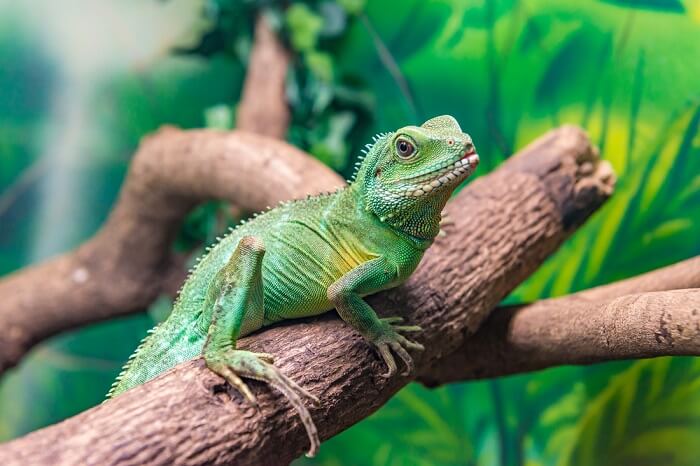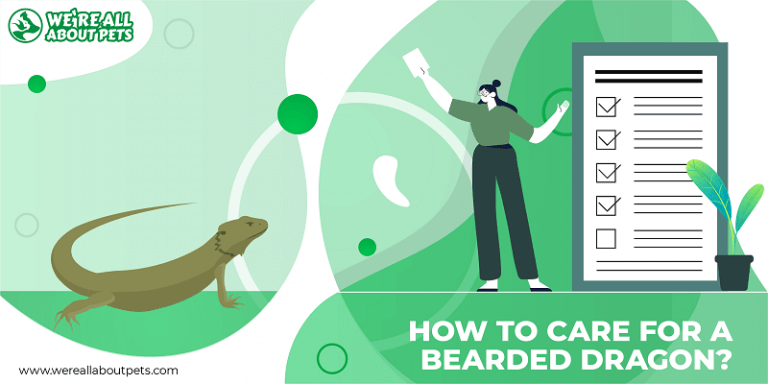Caring For A Red-Footed Tortoise: The Ultimate Guide
This page contains affiliate links. We may earn money or products from the companies mentioned in this post through our independently chosen links, which earn us a commission. Learn More
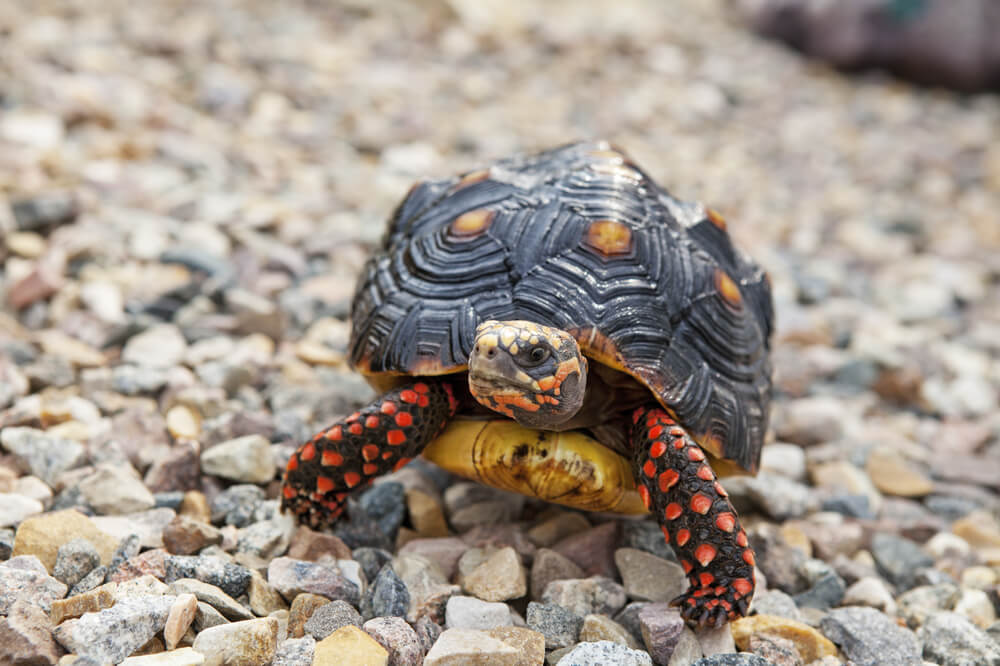
Red-footed tortoises can make good pets and offer unique traits that make them fun to be around. Their legs and head have beautiful red spots that make them have a really unique look. This article will help you understand their special needs and decide if they’re the right pet for you.
Care
Care of a reptile includes providing the right enclosure. It needs the proper temperature, lighting, humidity, substrate and size. Red-footed tortoises can live 30 or more years in captivity, and some reports suggest that they can live more than 50 years with good care.
Cage Size
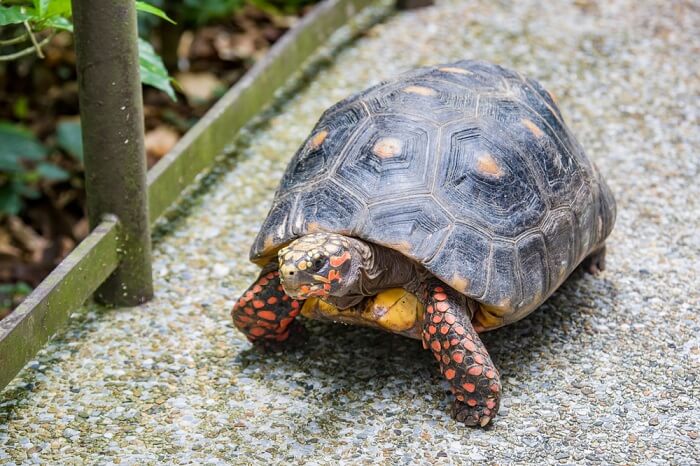
Red-footed tortoises grow to be over 20 pounds and will be around 1 foot in length as adults. Keep that in mind for the long-term plans. While a 20-gallon aquarium may be fine for a juvenile, your adult tortoise will need a much larger enclosure. Indoors, a minimum sized enclosure would be 10-15 square feet.
The wall needs to be 1 ½ feet tall to avoid them climbing out and escaping. In the right climate, they can be kept outdoors in an enclosure. The area should be 5 x 5 feet or larger.
Outdoor enclosures will need a strong perimeter fence or wall that extends 6 inches below the surface to avoid escape. Outdoor enclosures also need to protect them from raccoons, dogs and other animals that may cause harm.
Substrate
Both indoor and outdoor enclosures should have a substrate that allows some shallow digging behaviors. Most solis outdoors in yards will be fine.
Indoors, several inches of sterile potting soil or coconut fiber are recommended in at least part of the enclosure. Cypress or aspen wood chips can also be added for a texture variety. Avoid pine and cedar since they have irritating oils that may contribute to respiratory irritation.
Temperature
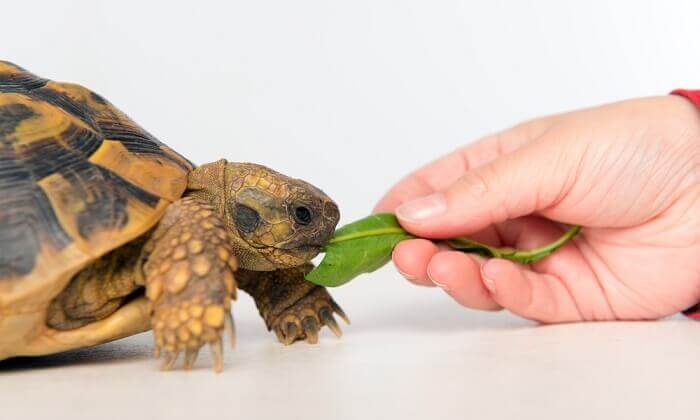
Either indoor or outdoor enclosures can have a temperature range between the upper 60s and 80 F. They also require a heat source that provides a basking area of 90-95F.
Indoors, a powerful heat lamp or ceramic heater can provide the needed heat source. Make sure that the lamp is above the level that would allow direct contact. For enclosures with multiple animals, provide several basking areas.
Outdoors, the sun can act as the heat source in the right climate. A shelter should be provided that allows protection from the heat and allows access to an area in the low 80s F.
In cooler weather, the shelter should be heated to allow continued access to the preferred temperature range. For cooler times of the year, an indoor area may be built into a garage or shed, provided there is good ventilation.
Lighting
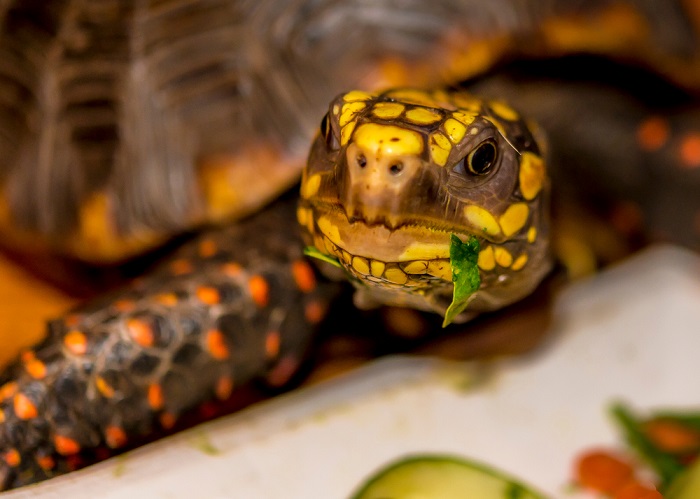
Like most reptiles, red-footed tortoises need access to UVB lighting to make Vitamin D3 and utilize calcium properly. For outdoor tortoises, the sun provides the best source of UVB that can be found.
For indoor tortoises, a UV light must be provided for 12 hours a day. Be aware that the UV spectrum wanes long before the light burns out, so it should be replaced every 6 months.
Humidity
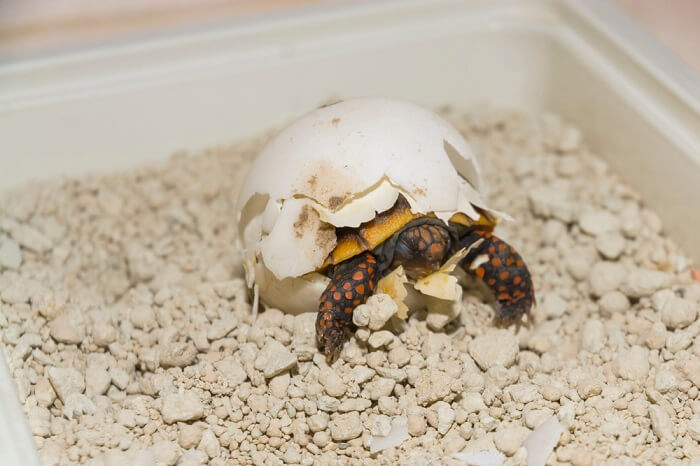
Red-footed tortoises are native to South America and live in tropical forests and grasslands. The humidity in the enclosure should be relatively high: 55-65%. Indoors, use a hygrometer to make sure that the required humidity is provided.
Juveniles should have humid hides filled with moss that’s regularly changed in order to give access to higher humidity during growth.
Temperament
Red-footed tortoises are very gentle and active. They will spend a lot of time roaming around and exploring. They may be interactive with people, especially when it centers around food. Biting is extremely rare.
Diet
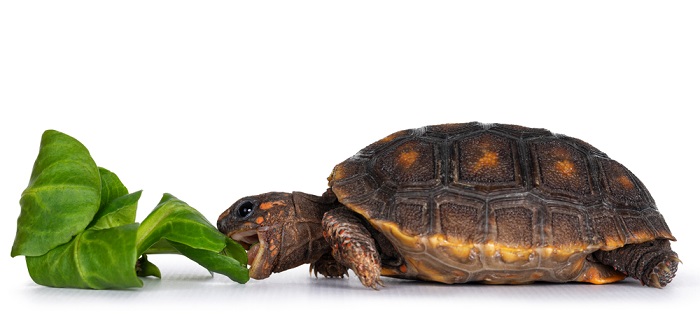
Tortoises are strict vegetarians. They should never be given foods designed for other animals. Dog and cat food has a good deal of animal protein that they can’t digest effectively. Animal protein is very hard on their kidneys and will lead to early kidney failure.
Salads can be offered daily. Vegetables that are good for the salads include a base of Romaine lettuce, red-or-green leafed lettuce, spring mix, hibiscus, or dandelion greens. The occasional addition of collard greens, carrot tops, kale, and mustard greens are fine as long as they are done more as treats. You can add other vegetables for variety: carrots, cactus pads, cucumber, bell pepper, butternut squash (steamed) and bok choy seem to be favorites.
Rare treats of fruits can be offered for treats. They should be uncommon treats because the sugar content isn’t good for their digestion. When given, though, it can be a great deal of fun watching them attack strawberries, tomatoes or watermelon.
Occasional protein sources may be good for red-footed tortoises as well. Commercial tortoise diets can supplement the vegetables and occasional earthworms or superworms offer extra proteins. It’s thought that wild red-footed tortoises will opportunistically eat insects.
With a good UV source and the proper vegetables, supplements aren’t needed and excess calcium may be one of the things that contribute to the pyramiding of the shell. If your tortoise is a picky eater, then supplementing some calcium and vitamins weekly may be beneficial. However, with a good variety of vegetables, supplementation isn’t needed.
Water should be available in the enclosure and should be cleaned and replaced daily. It should be deep enough and large enough to allow soaking, but shallow enough to give easy entry and exit.
Health Concerns
Tortoises should be seen regularly by a veterinarian. The most common health concerns that you may see include:
- Respiratory infections
- Bladder stones
- Heat stress
- Trauma (animals)
- Ingestion of inappropriate objects
- Nutritional disease
- Shell damage
- Parasites
Summary
Red-footed tortoises have a great temperament, a unique color pattern, and can be an amazing pet for someone willing to make the commitment to the care they require.
Frequently Asked Questions
Is a red-footed tortoise a good pet?
Tortoises are a fair bit more solitary than cats, dogs, rats and most other mammals. They won’t be a cuddly pet, but if you’re OK with that, they do have unique personalities that will offer hours of time getting to know them and enjoy their company.
How big do red-footed tortoises get?
On average, they will be about a foot long and weigh about 20 pounds. Males get larger than females and will be slightly more than a foot. Females will usually be slightly less.
How long do red-footed tortoises live?
On average, red footed tortoises live between 20-40 years, depending on the health, care and diet. However, there are reports of some living more than 50 years!
Do red-footed tortoises get lonely?
Doubtful. In the wild they tend to have their own territory and are naturally solitary animals. They come together when it’s time to mate, but otherwise don’t interact with other tortoises much in the wild.






